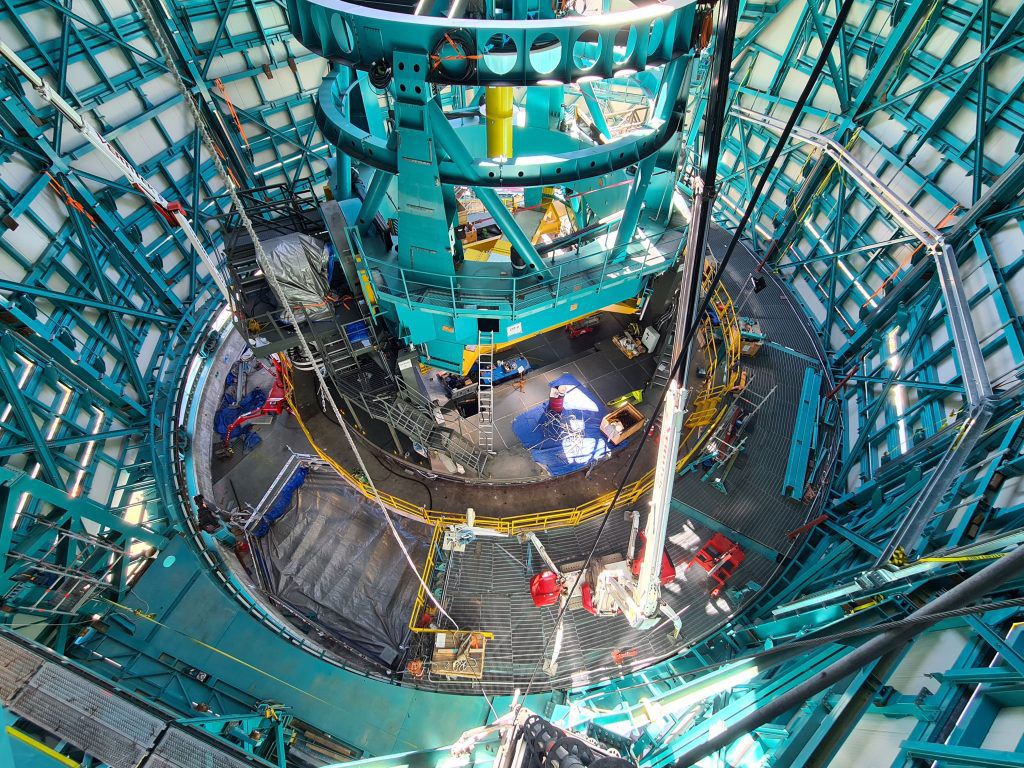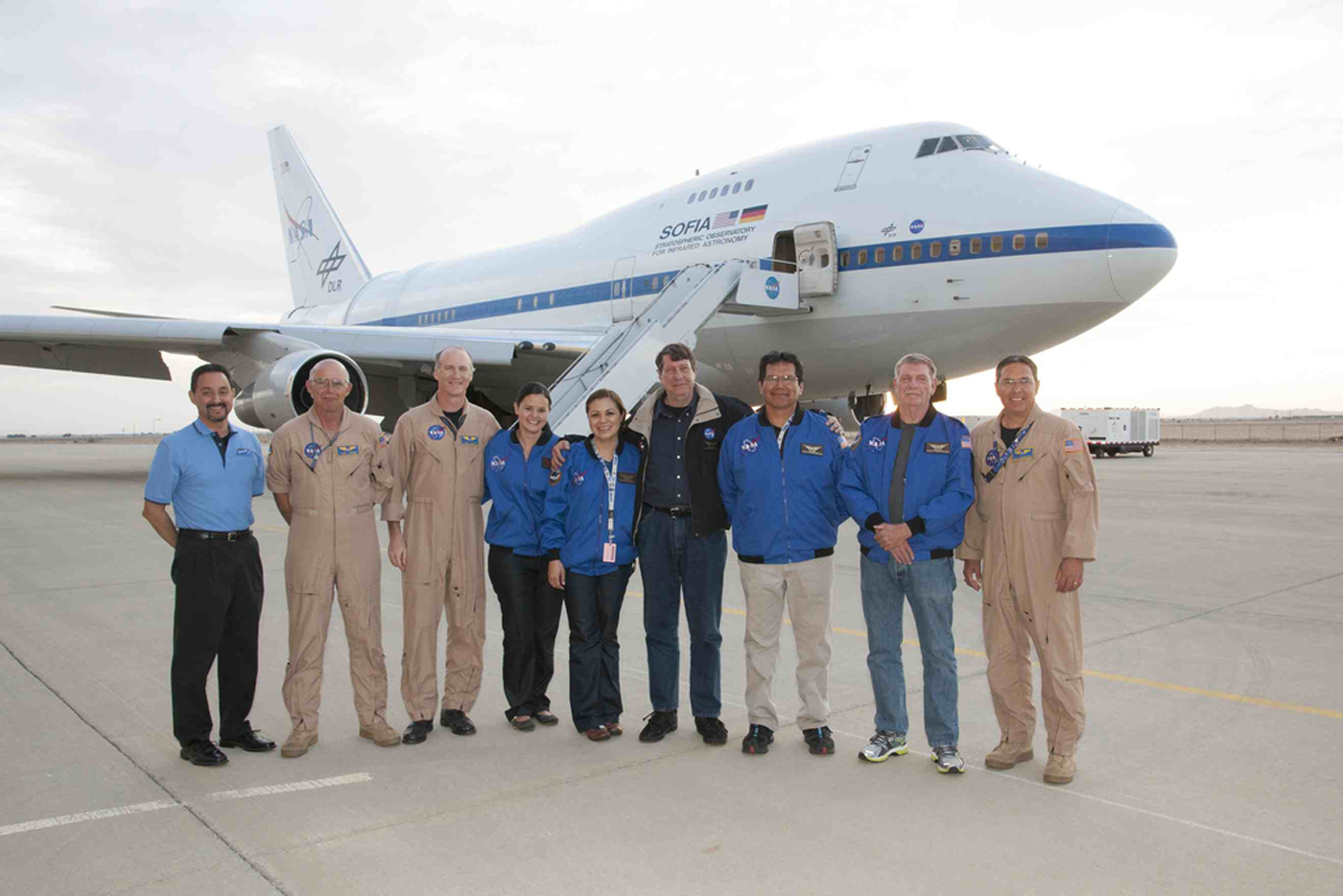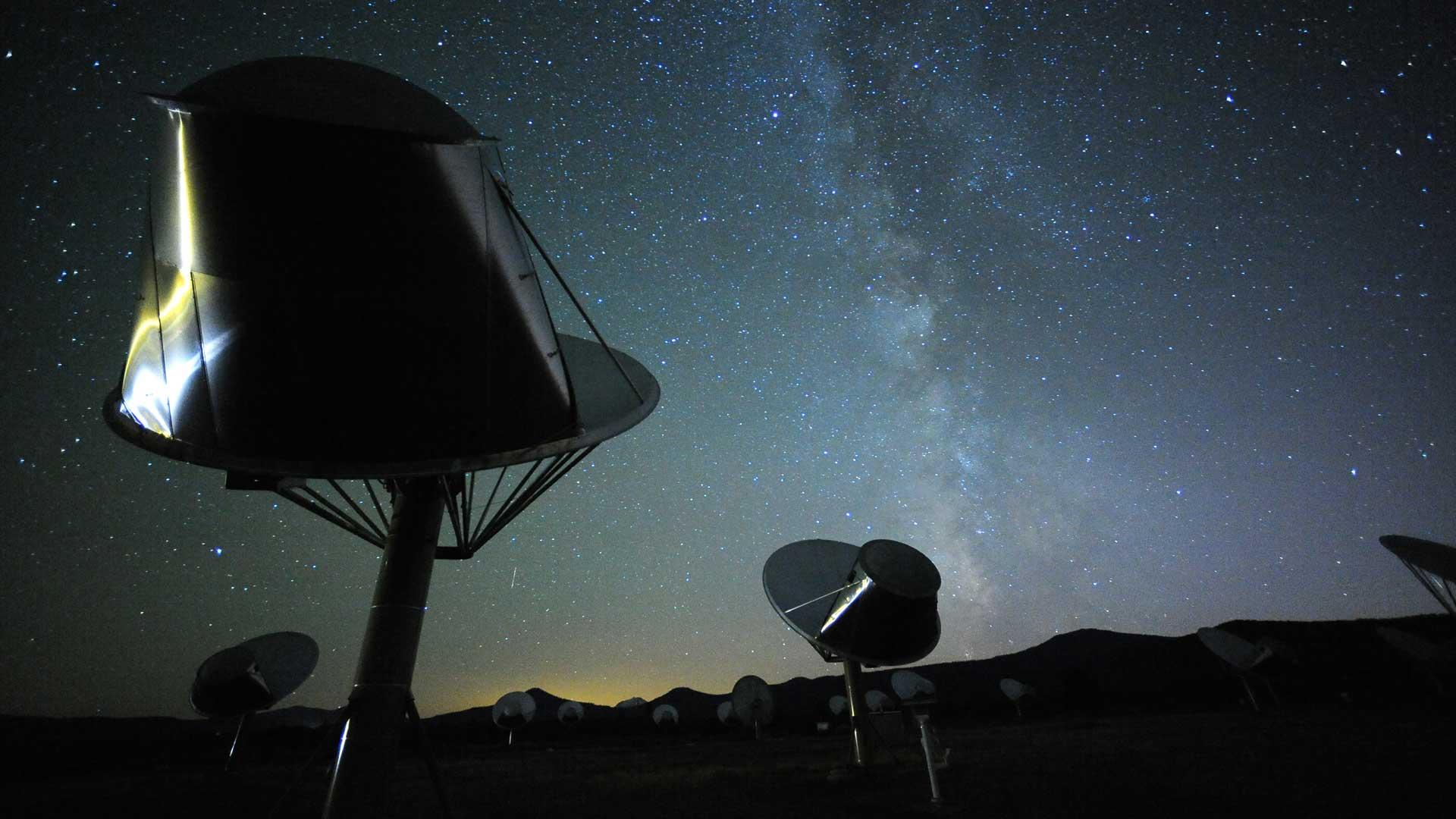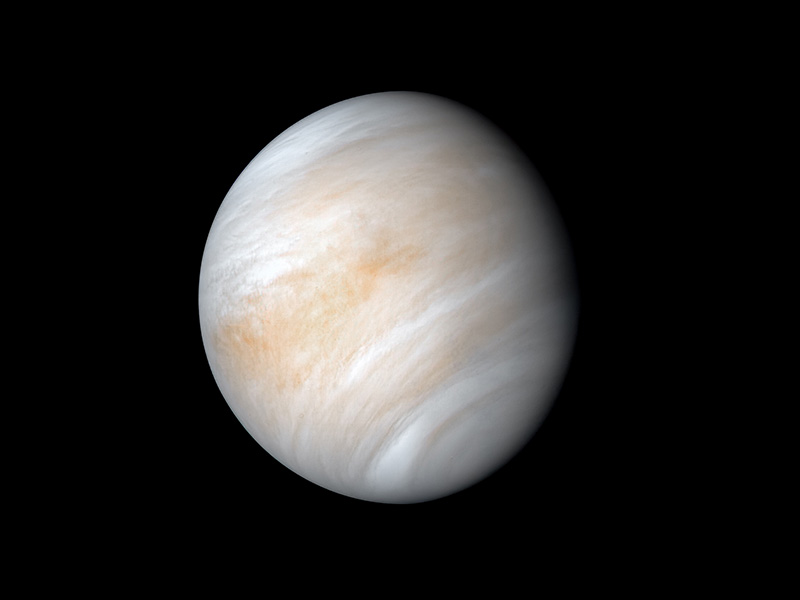
SETI Institute Senior Astronomer, Seth Shostak, shares his opinion on the controversial new initiative to use the Vera C. Rubin Observatory to investigate both interstellar objects that come into our Solar System and any objects found in our atmosphere.
For seven decades, the UFO believers have been belittled by serious scientists for making extraordinary claims without offering any extraordinary evidence. Now a credentialed researcher seems ready to step in to help.
…
That will cause some folks to roll their eyes and conclude that Loeb has gone over to the dark side. But that’s too easy. The subject is obviously important, and it should be addressed without preconceived notions or opinions based on the poor UFO evidence of the past.
- Scientific American: Harvard’s Avi Loeb Thinks We Should Study UFOs – and He’s Not Wrong
 “Strive for Greatness”
“Strive for Greatness”This is one of the lessons that high school science teacher Melissa Bouquet wants to bring to her students after her experience with the Airborne Astronomy Ambassadors program, which includes science-gathering flights on the Stratospheric Observatory for Infrared Astronomy (SOFIA).
"They're overnight flights. You get to meet the scientists using specific instruments on those flights, you get to meet telescope operators, [and] there's mission directors,” said Bouquet. “It's just really awesome."
…
"Being able to relate real world scenarios to what you're instructing is fantastic for them,” said Bouquet.
For Bouquet, she hopes her trip in the sky shows her students how they can strive for new heights in whatever they aspire to be.
- KMOV4: Fort Zumwalt teacher takes education to new heights in NASA program
- SETI.org: Airborne Astronomy Ambassadors Program
- SETI.org: 30 Teachers Selected as Airborne Astronomy Ambassadors to Bring NASA Science to Classrooms
 Dropping in on the Eavesdroppers
Dropping in on the EavesdroppersLooking for a way to personally connect with SETI science and have a vacation at the same time? Consider visiting an observatory, such as the SETI Institute’s Allen Telescope Array in northern California.
Located near Hat Creek in the Cascade Mountains of Northern California, the 42 massive antennas outfitted with highly sensitive and specialized receivers (covering radio frequencies between 1,000 to 15,000 MHz) scan for radio signals aliens may be transmitting. Scientists believe eavesdropping (rather than sending rockets) is the best way to detect alien life because of the enormous distances to the stars.
Earthlings can catch the Allen Telescope Array in action on a self-guided tour through the visitor center, which offers a window into the signal processing room.
- MSN: Where earthbound travelers can search for extraterrestrial life
- SETI.org: Allen Telescope Array
 Earthquakes – yes. Venusquakes? We Don’t Know
Earthquakes – yes. Venusquakes? We Don’t KnowWith the high pressures, toxic chemicals, and broiling temperatures, it isn’t easy to find a way to test for Venus’ seismic spasms, if they exist. But a new project may have found a way – use a balloon.
But what if your seismic sensor never actually touched the surface? What if you dangled it from a high-altitude balloon floating above the worst Venusian storms? “I love the idea that this could be done from high in the atmosphere rather than needing a long-lived surface platform,” [David] Grinspoon said.
- Yahoo! News: Venus Balloons are the Hot New Space Accessory

“Echoverse” Announces New Scripted Projects
Among the new projects coming from the podcast production studio is one titled “The Dying Immortal”.
In an unprecedented collaboration with The SETI (Search for Extra-Terrestrial Intelligence) Institute, award-winning podcast creator Mac Rogers (The Message, LifeAfter, StealThe Stars) writes a science-based story about mankind's first encounter with an alien lifeform.
- Yahoo! Finance: Podcast Studio ‘Echoverse’ Announces A New Slate of Projects
Join hosts Seth Shostak and Molly Bentley each week as they explore emerging science and technology research.
The seas are rising. It’s no longer a rarity to see kayakers paddling through downtown Miami. By century’s end, the oceans could be anywhere from 2 to 6 feet higher, threatening millions of people and property. But humans once knew how to adapt to rising waters. As high water threatens to drown our cities, can we learn do it again.
Hear stories of threatened land: submerged Florida suburbs, the original sunken city (Venice), and the U.S. East Coast, where anthropologists rush to catalogue thousands of low-lying historical and cultural sites in harm’s way, including Jamestown, Virginia and ancient Native American sites.
But also, stories of ancient adaptability: from the First American tribes of the Colusa in South Florida to the ice age inhabitants of Doggerland. And, modern approaches to staying dry: stilt houses, seawalls, and floating cities.
With guests Jeff Goodell, Brian Fagan, and David Anderson
Your daily mucus output is most impressive. Teaspoons or measuring cups can’t capture its entire volume. Find out how much your body churns out and why you can’t live without the viscous stuff. But slime in general is remarkable. Whether coating the bellies of slithery creatures, sleeking the surface of aquatic plants, or dripping from your nose, its protective qualities make it one of the great inventions of biology. Join us as we venture to the land of ooze!
With guests Christopher Viney, Katharina Ribbeck, Anna Rose Hopkins, and Ruth Kassinger
More Big Picture Science episodes can be found at http://bigpicturescience.org/episodes.
SETI Institute hosts interview cutting-edge scientists each week on social media. Recent SETI Live episodes include:
Predicting Coastal Flooding with Machine Learning/AI
Coastal flooding is one of the most significant disasters that human society faces, exacerbated by a denser coastal population than inland. Climate change is causing rising sea surface levels, making the coastal regions more vulnerable to flooding. It is critical to predict flooding in coastal areas in a timely manner and assess the impact under various atmospheric and ocean conditions.
Join us as we talk with the Frontier Development Lab's (FDL) 2021 Digital Twin Earth - Coast's team to discuss how they are developing the first coastal digital twin providing fast and accurate water level dynamics at coastal regions using state-of-art deep learning techniques.
Keeping Track of Satellites in Space
The number of Low-Earth Orbit (LEO) satellites is increasing, and their trajectories are impacted by continuous interaction with the thermosphere (a layer of the Earth's atmosphere), which causes atmospheric drag. These uncertainties caused by atmospheric drag can impact our ability to assess things like the risk of collisions, re-entry prediction and communications of these satellites. By precisely modeling atmospheric drag to accurate predict satellite location, it will be possible to ensure accessibility and safety in space.
Can We Prevent Space Radiation from Causing Cancer in Astronauts?
In the vacuum of space, astronauts are exposed to cosmic radiation constantly. This can damage cells and cause mutations that drive cancer. This problem may seem far away, yet it is a huge limiting factor for space-flight. While the link between radiation and cancer has long been understood, we want to take a more in-depth look. Understanding the specific molecular drivers of injury in space radiation exposure can give us major insights into how to mitigate injury, and potentially even provide preventative measures.
REU: Candidate Sites for Artemis Basecamp on the Moon
NASA’s Artemis Program aims to land the first woman and next man at the Lunar South Pole and enable a sustainable long-term human presence on the Moon. Two students are working with Dr Lee at the SETI Institute to propose possible candidate locations for an Artemis Base Camp on the Moon using specific sets of criteria - scientific, environmental, logistical, operational - and NASA’s state-of-the-art “Moon Trek” mapping, modeling, and visualization tool.
Can We Automate Reporting for Natural Events?
Every day hundreds of natural events happen around the world including, fires, hurricanes, thunderstorms and earthquakes. Human reporting on all events is a time-consuming and expensive task. Frontier Development Lab's Automated Reporting team aims to leverage natural language processing (NLP) techniques for these events and provide this tool to NASA.
If we are going to search for signs of life on an exoplanet, what should we look for? When it comes to planets that are hosting life, our current sample size is one. Earth. So how could we design a small satellite mission to take whole-Earth spectra in order to measure the temporal variability of spectra from an inhabited planet with illumination phase, rotation (land vs ocean), cloud cover, and season. The data would help improve models of habitable planets, guide analysis of exoplanet atmospheric measurements, and inform instrumentation for future NASA missions to search for signs of life on exoplanets. Join Beth Johnson in discussion with SETI Institute astronomer Douglas Caldwell and REU (Research Experience for Undergraduates) student Jorge Y Coppin-Massanet to hear how they are tackling this challenge.
How Does Solar Wind Affect Weather on Earth?
Every star has an atmosphere that reaches out into interplanetary space. This atmosphere is made of charged particles that continuously flow outwards, called the solar wind, and significantly impact Earth’s space weather. Understanding the structures that make up the solar wind, such as the magnetic field, velocity, temperature, and density parameters, is essential to understanding and predicting the behavior that impacts us here on Earth and for extraterrestrial missions. Experts who can identify solar-wind structures are limited, and there are years’ worth of data to catalog. The goal of this challenge is to use machine learning to create a catalog of solar wind structures. Join the FDL 2021 team charged with Uncovering the Origin of the Solar Wind as they discuss their goals and their work.
Spotted! A Distant Alien Moon Being Born
For the first time, astronomers observed a “disc” around an exoplanet, a large circular mass that can potentially form moons. The exoplanet, officially called the PDS 70c, is one of two massive planets that look similar to Jupiter, in orbit around a young sun-like star located approximately 400 light-years away from Earth.
Using the Atacama Large Millimetre/submillimetre Array (ALMA), researchers detected a circumplanetary disk, a ring-shaped area surrounding a planet, where moons and other satellites may form. The study of this system will offer a deeper understanding of the formation of planets and moons.
To discuss this game-changing discovery, we invited Myriam Benisty, a researcher at the University of Grenoble, France, and at the University of Chile and the lead author of the article. Joining her will be Stefano Facchini, astronomer at the European Southern Observatory, and Richard Teague, researcher at the Center for Astrophysics at Harvard University. Moderated by Senior Planetary Astronomer Franck Marchis, this SETI Live will explain the technique used to make this important discovery and a short analysis of the finding. There will be an opportunity to ask questions to the researchers to truly understand why this is an important new step in the study of exoplanets and the search for life in our universe.
Videos of all past Facebook Live events can be found on our Facebook page, https://www.facebook.com/SETIInstitute/, or on our YouTube channel, https://www.youtube.com/SETIInstitute.





